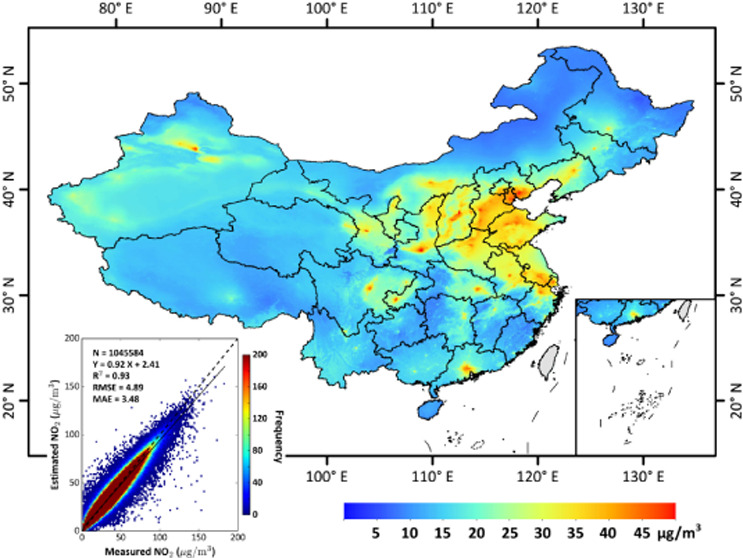- Record: found
- Abstract: found
- Article: found
Ground-Level NO 2 Surveillance from Space Across China for High Resolution Using Interpretable Spatiotemporally Weighted Artificial Intelligence

Read this article at
Abstract

Nitrogen dioxide (NO 2) at the ground level poses a serious threat to environmental quality and public health. This study developed a novel, artificial intelligence approach by integrating spatiotemporally weighted information into the missing extra-trees and deep forest models to first fill the satellite data gaps and increase data availability by 49% and then derive daily 1 km surface NO 2 concentrations over mainland China with full spatial coverage (100%) for the period 2019–2020 by combining surface NO 2 measurements, satellite tropospheric NO 2 columns derived from TROPOMI and OMI, atmospheric reanalysis, and model simulations. Our daily surface NO 2 estimates have an average out-of-sample (out-of-city) cross-validation coefficient of determination of 0.93 (0.71) and root-mean-square error of 4.89 (9.95) μg/m 3. The daily seamless high-resolution and high-quality dataset “ChinaHighNO 2” allows us to examine spatial patterns at fine scales such as the urban–rural contrast. We observed systematic large differences between urban and rural areas (28% on average) in surface NO 2, especially in provincial capitals. Strong holiday effects were found, with average declines of 22 and 14% during the Spring Festival and the National Day in China, respectively. Unlike North America and Europe, there is little difference between weekdays and weekends (within ±1 μg/m 3). During the COVID-19 pandemic, surface NO 2 concentrations decreased considerably and then gradually returned to normal levels around the 72nd day after the Lunar New Year in China, which is about 3 weeks longer than the tropospheric NO 2 column, implying that the former can better represent the changes in NO x emissions.
Abstract
Daily seamless 1 km resolution high-quality surface NO 2 dataset across mainland China is generated from big data using artificial intelligence.
Related collections
Most cited references59
- Record: found
- Abstract: not found
- Article: not found
The ERA5 Global Reanalysis
- Record: found
- Abstract: found
- Article: not found
MissForest--non-parametric missing value imputation for mixed-type data.
- Record: found
- Abstract: not found
- Article: not found